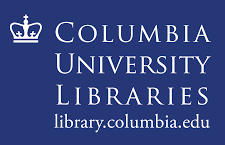Treatment of myiasis in Lombok civet (Paradoxurus hermaphroditus) at ex-situ conservation institutions
Abstract
Lombok Wildlife Park is an ex-situ conservation institution in the form of a wildlife park that supports the safety of wild animal species. The Lombok civet (Paradoxurus hermaphroditus) is a wild animal kept in the same cage as the female moon civet (Paguma larvata). The Lombok civet was found to have a vulnus at the base of its tail and continued with myiasis. The Lombok civet was treated with antibiotics and anti-inflammatory drugs for wound healing. Myiasis was treated by administering larvicide, and larvae were manually removed. After five days of treatment, the vulnus was still not completely healed, fly larvae were no longer visible, and appetite was still poor.
Downloads
References
Ferdina R, Busman B, Putri RA. 2022. Penggunaan obat kumur povidone iodine sebagai tindakan pra-prosedural untuk mengurangi risiko penularan Covid-19. Menara Ilmu. 16 (2):77-83. https://doi.org/10.31869/mi.v16i2.3291
Gorda IW. 2016. Vulnus morsum pada kucing lokal [skripsi]. Bali (ID): Universitas Udayana.
Jothish, PS. 2011. Diet of the common Palm Civet Paradoxurus hermaphroditus in a rural habitat in Kerala, India, and its possible role in seed dispersal. Small Carnivore Conservation. 45:14-17.
Lobo MA, Hernández-Núñez A, García-Arata MI, Borbujo J. 2014. Autochthonous cutaneous myiasis due to Chrysomya bezziana. Actas Dermo-Sifiliográficas (English Edition). 5(105):522-524. https://doi.org/10.1016/j.adengl.2014.04.014
Mudappa D, Kumar A, Chellam R. 2010. Diet and fruit choice of the Brown Palm Civet Paradoxurus jerdoni, A viverrid endemic to the western ghats rainforest, India. Tropical Conservation Science. 3(3): 282-300.
https://doi.org/10.1177/194008291000300304
Obanda V, Ndambiri EM, Kingori E, Gakuya F, Lwande OW, Alasaad S. 2013. Traumatic myiasis in free-ranging eland, reported from Kenya. Parasites Vectors. 6(1):1-5. https://doi.org/10.1186/1756-3305-6-89 | PMid:23566876 PMCid:PMC3636081
Prudenta O, Mardasella A, Sahmiranda D, Ardianto Y, Aeka A, Brawijaya M. 2021. Gagal ginjal kronis pada kucing domestik rambut pendek. Media Kedokteran Hewan. 32(1):29-39. https://doi.org/10.20473/mkh.v32i1.2021.29-39
Winaya A, Rico MJI, Avilez M, Wahyuningsih S, Wijono TB. 2018. Studi ragam morfometri musang (Paradoxurus hermaphroditus, Pallas 1777) asal Nusa Tenggara Barat sebagai basis data identifikasi variasi genetik. Prosiding Seminar Nasional VI Hayati. 6(Sept):92-103.

Copyright (c) 2023 CC-BY-SA

This work is licensed under a Creative Commons Attribution-ShareAlike 4.0 International License.
Authors who publish with this journal agree to the following terms:
1. Authors retain copyright and grant the journal right of first publication with the work simultaneously licensed under a Creative Commons Attribution License that allows others to share the work with an acknowledgement of the work's authorship and initial publication in this journal.
2. Authors are able to enter into separate, additional contractual arrangements for the non-exclusive distribution of the journal's published version of the work (e.g., post it to an institutional repository or publish it in a book), with an acknowledgement of its initial publication in this journal.
3. Authors are permitted and encouraged to post their work online (e.g., in institutional repositories or on their website) prior to and during the submission process, as it can lead to productive exchanges, as well as earlier and greater citation of published work (See The Effect of Open Access).

.jpg)















